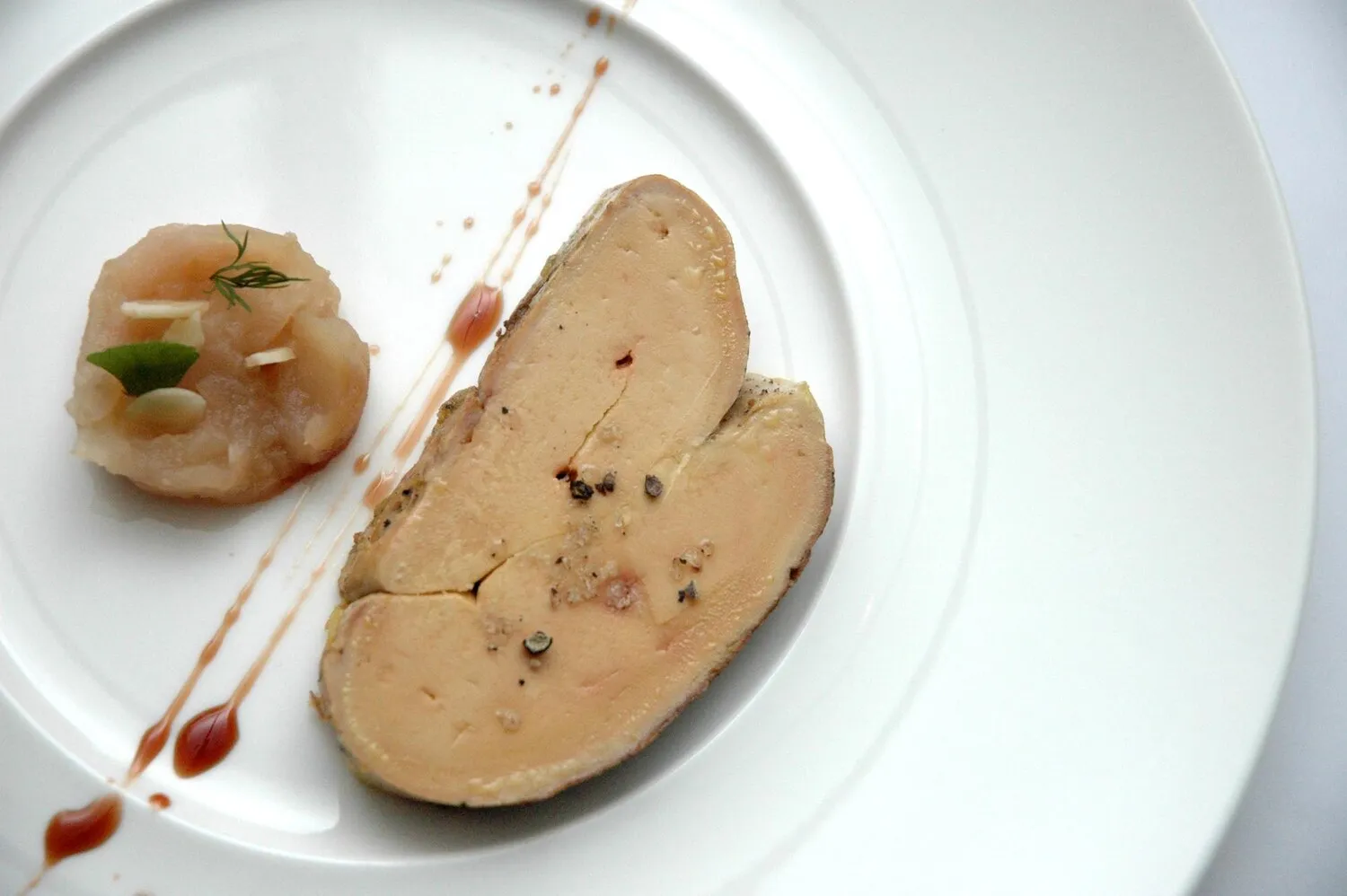
Foie Gras Maison
Foie Gras maison, chutney et toasts.
Nutrition Facts
* The % Daily Value (DV) tells you how much a nutrient in a serving of food contributes to a daily diet. 2,000 calories a day is used for general nutrition advice.
Foie gras, meaning 'fat liver,' has a history dating back to ancient Egypt where evidence suggests the force-feeding of birds for fattened livers. The practice was later adopted and refined by the Romans. In France, foie gras became a delicacy, particularly associated with the southwest region. 'Maison' implies it is homemade or prepared in-house, reflecting a traditional approach.
Foie gras is deeply embedded in French culinary tradition and is often associated with luxury, celebration, and special occasions. Its preparation and consumption are steeped in tradition and reflect French gastronomic values.
Gastronomic Heritage
Foie gras is considered a symbol of French gastronomic heritage, representing the country's dedication to fine dining and culinary artistry.
Celebration and Festivities
It is commonly served during holiday meals, such as Christmas and New Year's Eve, and at other celebratory events as a symbol of abundance and indulgence.
Regional Variations
While generally associated with France, different regions may have their own variations in preparation and serving styles of foie gras and accompanying chutneys.
The dish presents a rich and decadent flavor profile, characterized by the buttery and intensely savory foie gras balanced by the sweet, tangy, and sometimes spicy chutney. The toasts provide a crisp, neutral base.
Foie gras itself boasts a uniquely rich, fatty, and buttery flavor, with a smooth, almost melting texture. The chutney offers a counterpoint of sweetness and acidity, often incorporating fruits like figs, apples, or berries, along with vinegar, sugar, and spices. The toasts, usually made from baguette or brioche, add a crunchy textural contrast and a subtle flavor that complements the richness of the foie gras and the complexity of the chutney.
Serving Temperature
Foie gras should be served slightly chilled, but not ice cold, to allow its flavors and texture to fully develop. Take it out of the refrigerator about 15-20 minutes before serving.
Toast Selection
Choose toasts that are thin and crisp to provide a good textural contrast. Lightly toasted baguette slices or brioche toasts are popular choices.
Chutney Balance
The chutney should complement, not overwhelm, the foie gras. Aim for a balance of sweetness, acidity, and spice. Avoid chutneys that are overly sweet or overly spicy.
Wine Pairing
Traditionally, foie gras is paired with sweet white wines, such as Sauternes or Gewürztraminer. The sweetness of the wine complements the richness of the foie gras. A dry white wine like a white Burgundy can also be a good option.
Explore additional French dishes and restaurants
Explore FrenchDiscover top dining spots and culinary experiences in Villeurbanne.
Explore VilleurbanneLearn more about the food culture, restaurant scene, and culinary heritage of France.
Explore France
